Gluten-Free Self-Rising Flour is a key ingredient in biscuits, quick breads and pancakes. It's a must-have to making some of your favorite Southern-staples gluten-free, but it's not so easy to find in stores. So, I make my own. You can too - it's pretty easy.
Making Self Rising Flour:
First, you have to know what you're going for. "Normal" self-rising flour is made from "soft" all-purpose flour - which means it's lower in protein. Then it has baking powder and salt in prescribed amounts added in and blended. To get a similar affect in my gluten-free self-rising flour, I use a blend with less binding agent and little more baking powder than the "normal" version uses. That avoids the wonky texture you can get from binding agents and gives a similar rise as conventional flour blends do.
About the Ingredients for Gluten-Free Self Rising Flour:
Binder: I really like gum free baking binder, so I blend 60% psyllium husk powder + 40% potato starch myself. I know that may sound nuts to you, so I call for "baking binder" in the blend so you can use xanthan or guar gum if you prefer. Here's my guide to using binders and mixing your own. If you're using a blend that has a binder, you don't need it. (Although some recipes need more binder than others.)
Flours for Blending: when I say finely ground, that's what I mean. Don't mess around and buy cornmeal or nut meal or something and message me to tell me your biscuits were grainy. This Sweet Rice Flour from Koda Farms is my favorite rice flour by a long shot.
Baking Powder: for sobbing out loud, please make sure your baking powder is fresh! (All your ingredients, really.)
Store-bought Flour Blends: I like both King Arthur Measure for Measure and Pamela's Artisan Flour Blend. I've tried them both in this recipe and they've worked well. I didn't think either of them worked quite as well as mixing my own - it depends on how committed you are to the process.
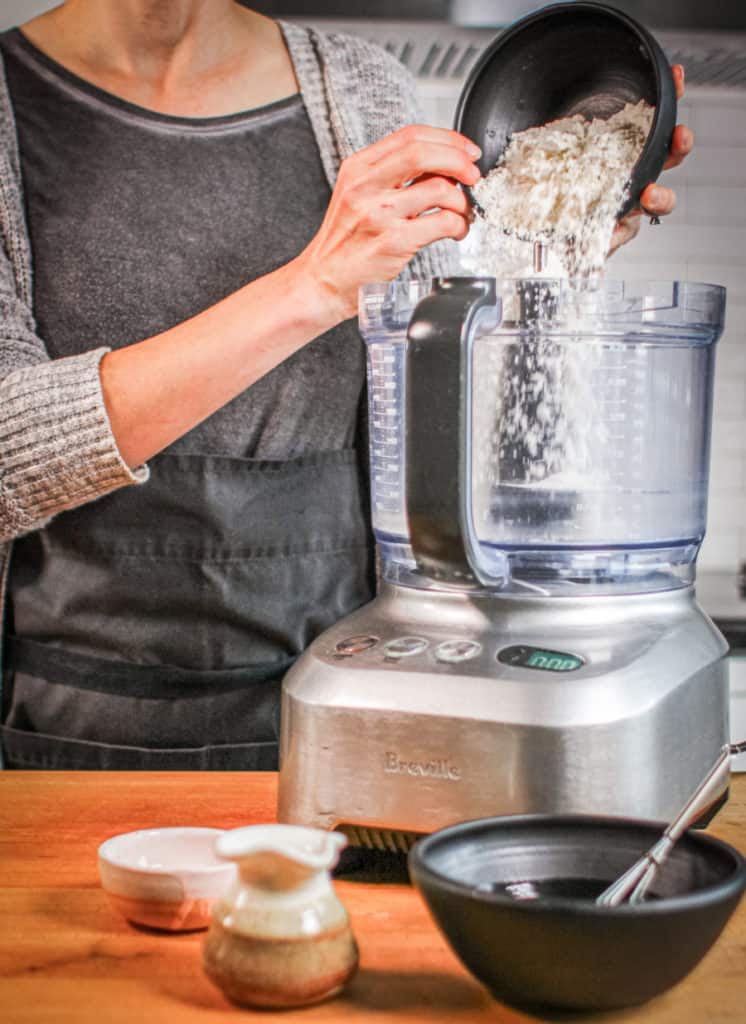
Don't Skimp on the Mixing Time for Gluten-Free Flours!
The directions for this gluten-free self rising flour blend calls for 10 minutes in a food processor or mixer, and I suggest you do exactly that. If your processor is getting warm from running, give it a break for 2-3 minutes in the middle of the mixing cycle. The rising agents need to be 100% mixed throughout the flour blend for successful lift in your recipes.
If you're blending your own gluten-free flour while making your self-rising mix, you can definitely do it all at once.
How to tell if your baking powder is still good:
- Add ½ teaspoon baking powder to a clean cup or small bowl
- Pour in ¼ cup boiling water
- If the mixture bubbles rapidly while you're pouring in the water, the baking powder is still fresh. (Don't worry if the bubble stop quickly, that's fine.) If only a few bubbles appear, or none at all, the baking power is expired and needs to be replaced.
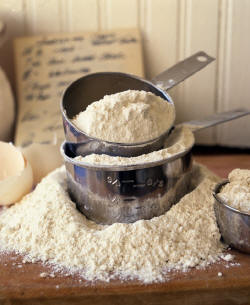
Gluten Free Self-Rising Flour
Equipment
- food processor
Ingredients
- 1 cup Gluten Free Flour Blend use KC's blend, your own blend, or good quality store bought
- 1 ½ teaspoons baking powder
- ½ teaspoon fine sea salt
- 1 teaspoon baking binder **ONLY if your blend does not contain it
Instructions
- Mix ingredients in a food processor or mixer for at least five minutes, ten is better.
- Store in an airtight container in a cool, dry place.
Notes
Nutrition
Use your favorite store bought gluten-free flour blend, your own blend, or use mine.
Ready to get baking? Get my best gluten-free baking tips here!
Gluten-Free Bechamel Sauce Recipe
This Gluten-Free Bechamel Sauce recipe has a dairy free option too, and it always comes out beautifully. Use this gluten-free white sauce to make delicious casseroles, mac & cheese, and more. We love it for country-style sausage gravies and in lasagna.
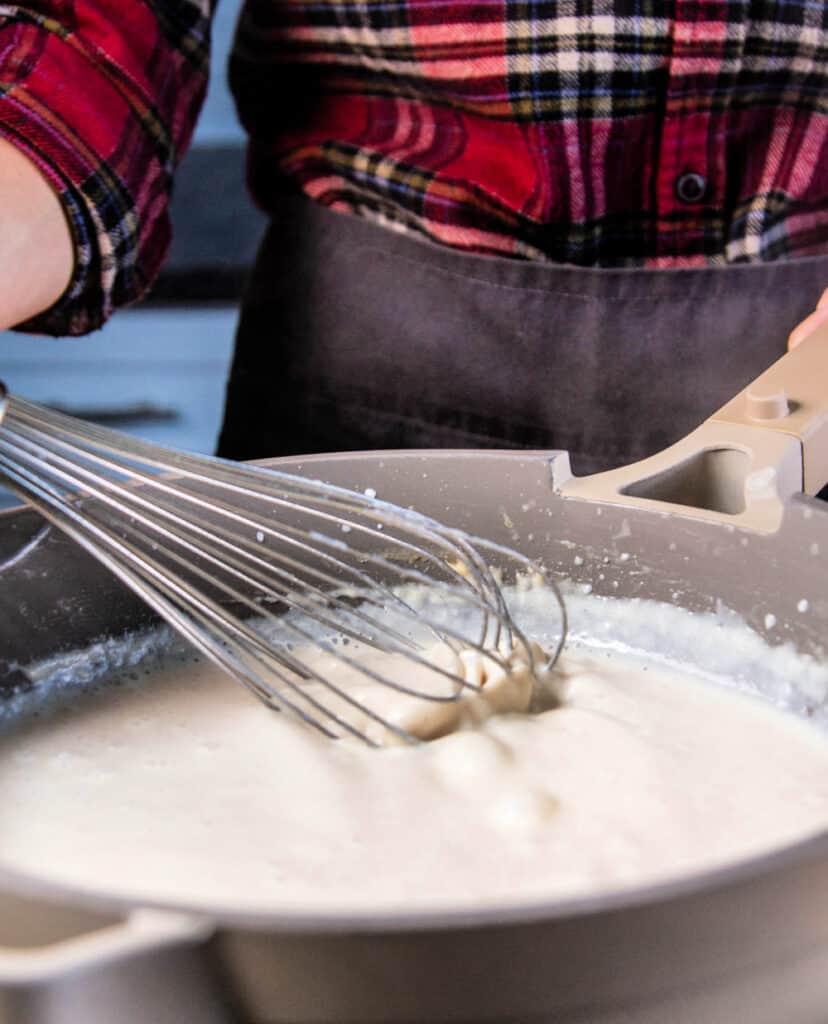
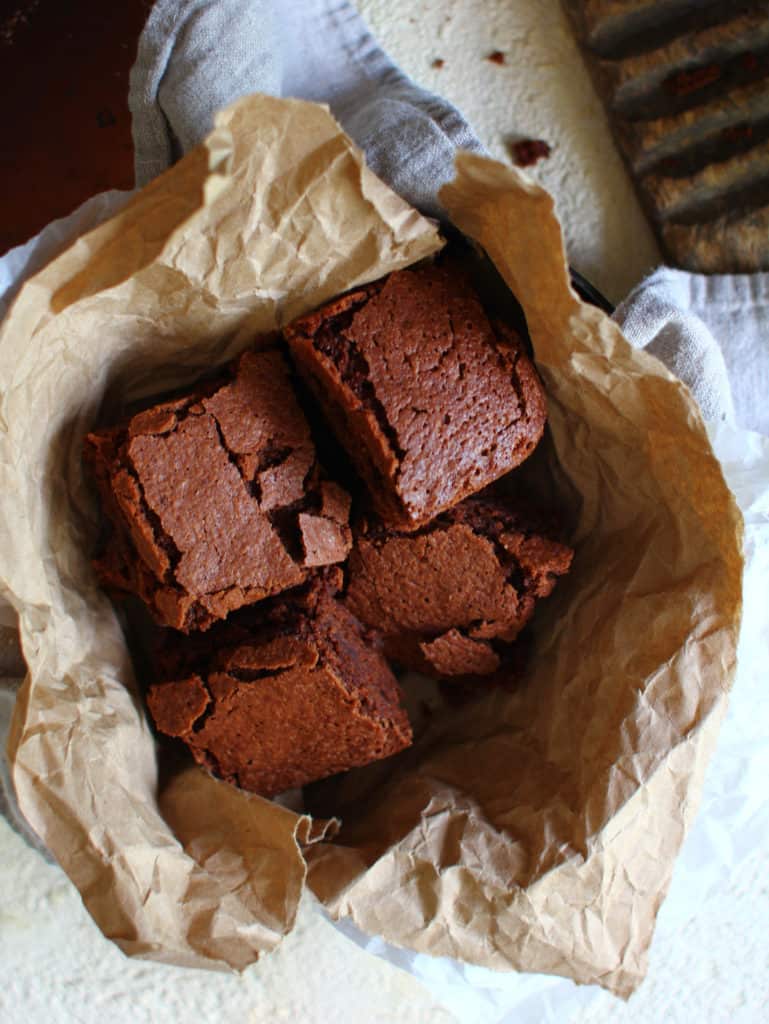
The BEST Gluten-Free Brownie Recipe Ever. Promise.
If you're a brownie fan, try Check out our BEST Gluten-Free Brownies or my Fully Loaded Brownies with a Cheesecake Swirl!
Frequently Asked Questions about Gluten-Free Self-Rising Flour:
Self rising flour contains salt and leavening agents (like baking powder) and is called for in specific recipes. All purpose flour is meant to be a universal ingredient used for most basic recipes. Gluten-free all purpose flours usually say "one for one" or "cup for cup" on the label, meaning they can replace all purpose flour.
Self rising flour is often used for biscuits and cobblers, but can also be used for pizza crust, quick breads and other baked goods that need a bit of leavening. It can also be used to make pancakes.
Yes. Self rising flour is made with all purpose flour, salt and baking powder, and it can be made at home. Gluten-free self rising flour should also contain a baking binder.
The best gluten-free substitute for self rising flour is to make your own using gluten-free flour blend, baking powder, salt and baking binder.


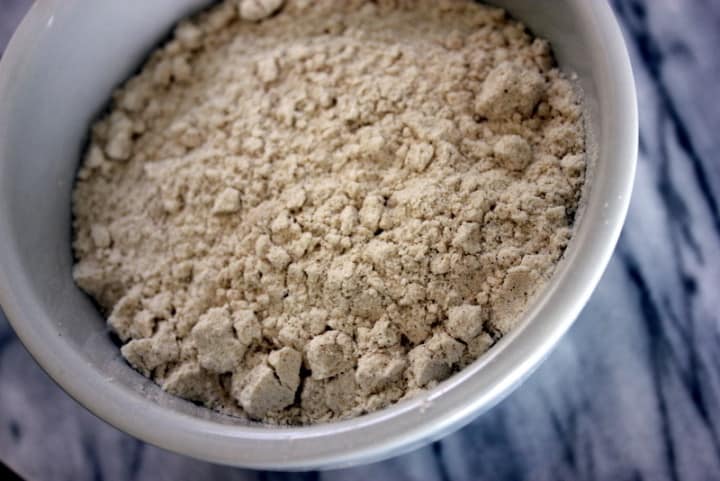
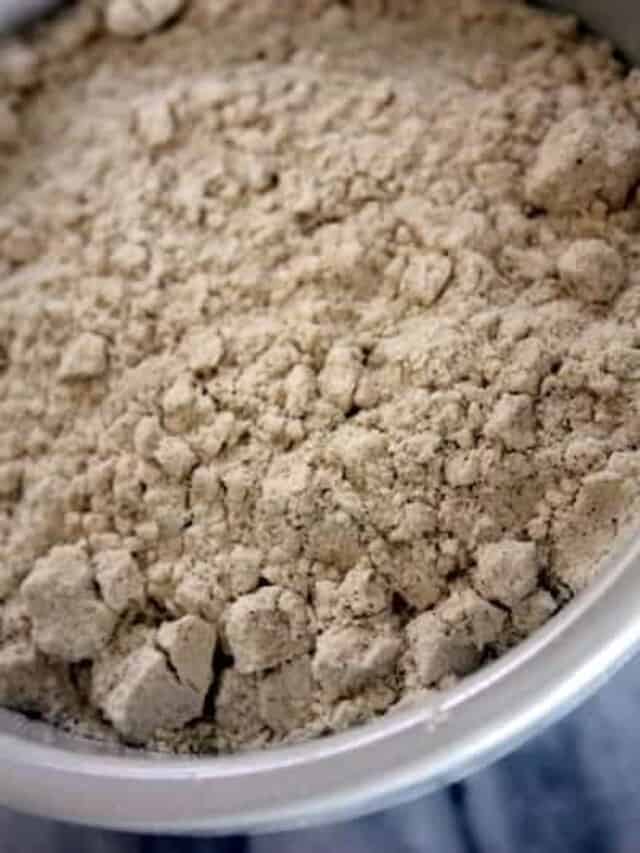
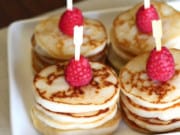

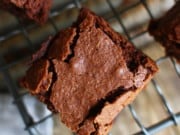


Sophie M Weston says
Hi...I have given up on "other flours" because I have so many allergies....since birth 19... something Like your style of addressing issues. Thank you so much for the many solutions: what to bake???
Jacqui says
Really struggling to find self raising gluten free flour in my local UK stores at the moment so this is a godsend, thank you. My son loves gluten free waffles and pancakes and would have been so disappointed not to have his homemade favourites.
K.C. Cornwell says
so happy to help!
Michelle says
What is the baking binder? What ingredient does this include?
Abby says
Xanthan gum is usually used
Brenda says
You can also use gaur gum as a less expensive substitute for xanthan gum. They work the same.
K.C. Cornwell says
Hi Michele - we describe baking binders inn the post - either xanthan gum, guar gum or a gum-free baking binder. You can find my gum-free baking binder recipe here: https://gfreefoodie.com/how-to-make-gum-free-baking-binder-and-using-xanthan-guar-gum-in-gluten-free-baking/
Princess says
So I try this recipe this morning and unfortunately I have no idea what I did but it did not puff up. Still tasted good but not puffing up was very disappointing. I did use a gluten-free flour and added baking powder and salt as I know, those are the pieces for the self rising, but I’m not sure what I did.
K.C. Cornwell says
I would check the freshness of the baking powder (there's a how-to section in this post) - that's often the issue. Hope that helps!
Lauren says
Why mix for 10 minutes?
K.C. Cornwell says
To make certain all the components are thoroughly mixed.